A closeup of Comet Lovejoy reveals a little known secret! Thanks to astrophotographer Lee Jennings for his holiday handiwork!
Best wishes to all for a wonderful holiday season from all of us at Universe Today!

Space and astronomy news
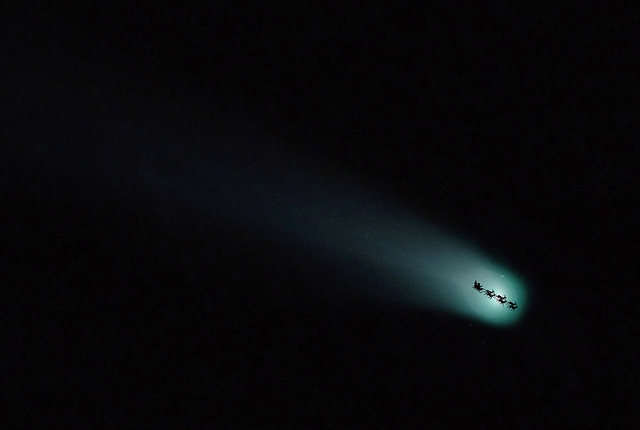
A closeup of Comet Lovejoy reveals a little known secret! Thanks to astrophotographer Lee Jennings for his holiday handiwork!
Best wishes to all for a wonderful holiday season from all of us at Universe Today!
Before there was life as we know it, there were molecules. And after many seemingly unlikely steps these molecules underwent a magnificent transition: they became complex systems with the capability to reproduce, pass along information and drive chemical reactions. But the host of steps leading up to this transition has remained one of science’s beloved mysteries.
New research suggests that the building blocks of life — prebiotic molecules — may form in the atmospheres of planets, where the dust provides a safe platform to form on and various reactions with the surrounding plasma provide enough energy necessary to create life.
“If the formation of life is like a jigsaw puzzle — a very big and complicated jigsaw puzzle — I like to imagine prebiotic molecules as some of the individual puzzle pieces,” said St. Andrews professor Dr. Craig Stark. “Putting the pieces together you form more complicated biological structures making a clearer, more recognizable picture. And when all the pieces are in place the resulting picture is life.”
We currently think prebiotic molecules form on the tiny ice grains in interstellar space. While this may seem to contradict the readily accepted belief that life in space is impossible, the surface of the grain actually provides a nice hospitable environment for life to form as it protects molecules from harmful space radiation.
“Molecules are formed on the dust surface from the adsorption of atoms and molecules from the surrounding gas,” Stark told Universe Today. “If the appropriate ingredients to make a particular molecular compound are available, and the conditions are right, you’re in business.”
By “conditions,” Stark is hinting at the second ingredient necessary: energy. The simple molecules that populate the galaxy are relatively stable; without an incredible amount of energy they won’t form new bonds. It has been thought that life could form in lightning strikes and volcanic eruptions for this very reason.
So Stark and his colleagues turned their eyes to the atmospheres of exoplanets, where dust is immersed in a plasma full of positive ions and negative electrons. Here the electrostatic interactions of dust particles with plasma may provide the high energy necessary to form prebiotic compounds.
In a plasma the dust grain will soak up the free electrons quickly, becoming negatively charged. This is because electrons are lighter, and therefore quicker, than positive ions. Once the dust grain is negatively charged it will attract a flux of positive ions, which will accelerate toward the dust particle and collide with more energy than they would in a neutral environment.
In order to test this, the authors studied an example atmosphere, which allowed them to examine the various processes that may turn the ionized gas into a plasma as well as determine if the plasma would lead to energetic enough reactions.
“As a proof of principle we looked at the sequence of chemical reactions that lead to the formation of the simplest amino acid glycine,” Stark said. Amino acids are great examples of prebiotic molecules because they are required for the formation of proteins, peptides and enzymes.
Their models showed that “the plasma ions can indeed be accelerated to sufficient energies that exceed the activation energies for the formation of formaldehyde, ammonia, hydrogen cyanide and ultimately the amino acid glycine,” Stark told Universe Today. “This may not have been possible if the plasma was absent.”
The authors demonstrated that with modest plasma temperatures, there is enough energy to form the prebiotic molecule glycine. Higher temperatures may also enable more complex reactions and therefore more intricate prebiotic molecules.
Stark and his colleagues demonstrated a viable pathway to the formation of a prebiotic molecule, and therefore life, in seemingly common conditions. While the origin of life may remain one of science’s beloved mysteries, we continue to gain a better understanding, one puzzle piece at a time.
The paper has been accepted for publication in the journal Astrobiology and is available for download here.
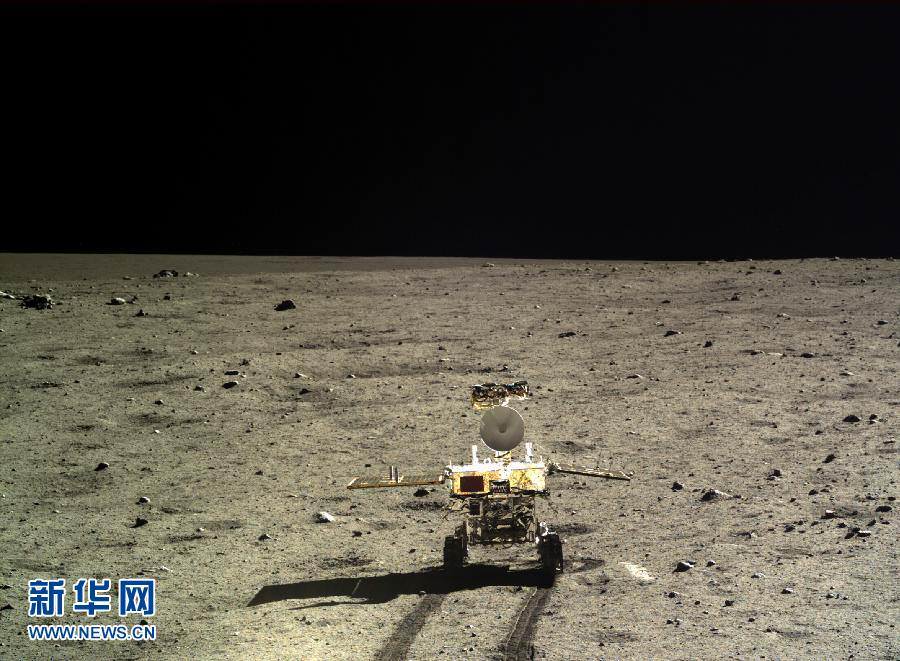
China’s 1st Moon rover ‘Yutu’ embarks on thrilling adventure marking humanity’s first lunar surface visit in nearly four decades. Yutu portrait taken by the Chang’e-3 lander. Credit: CNSA/CCTV
See below Yutu’s departing portrait of Chang’e-3 lander emblazoned with Chinese national flag
Story updated[/caption]
China’s now famous ‘Yutu’ moon rover has set sail for what promises to be breathtaking new adventures on Earth’s nearest neighbor, after completing a final joint portrait session with the Chang’e-3 lander that safely deposited her on the lunar surface only a week ago.
Yutu’s upcoming journey marks humanity’s first lunar surface visit in nearly four decades since the Soviet Union’s Luna 24 sample return vehicle visited. America’s last lunar landing mission with the Apollo 17 astronauts departed 41 years ago on Dec. 14, 1972.
The Chang’e-3 mothership and Yutu rover have resumed full operations after awakening from a sort of self induced slumber following commands from Mission Control back in Beijing.
The lander and rover finished up their 5th and final dual picture taking session – in living lunar color – on Sunday, Dec. 22, according to CCTV, China’s state run broadcast network.
“Ten pictures have been taken at five spots so far, and all of them are better than we expected,” said Wu Weiren, chief designer of the China Lunar Probe Program, to CCTV.
See the newly released portraits from photo session 5 – above and below.
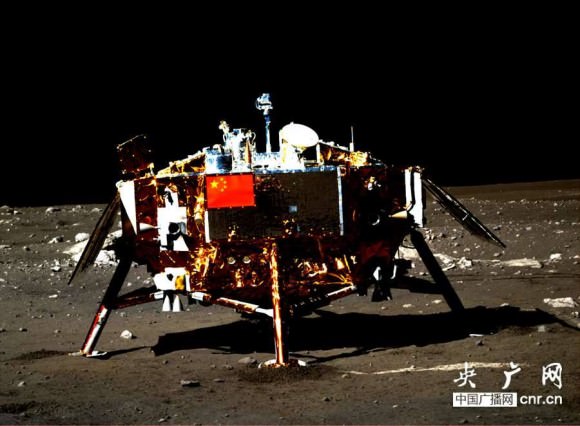
After arriving on the moon, Yutu and the lander took an initial pair of portraits of one another. Read my earlier report – here.
Yutu was then directed to travel in a semicircular path around the lander and to the south, making tracks several centimeters deep into the loose lunar regolith.
But within two days of the historic Dec. 14 touchdown, the two spacecraft took a four-day break that lasted from Dec. 16 to Dec. 20, during which China’s space engineers shut down their subsystems, according to China’s State Administration of Science, Technology and Industry for National Defense (SASTIND).
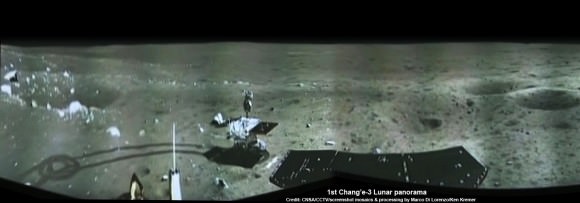
The vehicles took a ‘nap” to deal with direct solar radiation that significantly raised their temperatures. Yutu’s sunny side exceeded 100 degrees centigrade while the shaded side was simultaneously below zero, reported SASTIND.
“The break had been planned to last until Dec. 23, but the scientists decided to restart Yutu now for more research time, based on the recent observations and telemetry parameters,” said Pei Zhaoyu, spokesman for the Chinese lunar program, according to China’s Xinhua state news agency.
Both robots then snapped additional photos of one another during the traverse from each of five specific and preplanned locations.
See accompanying traverse map below – written in Chinese.
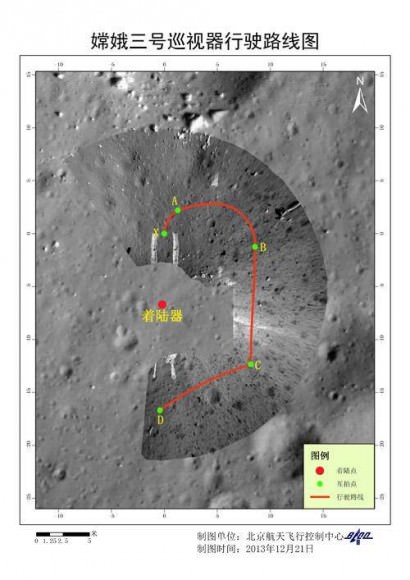
These images taken by Yutu were designed to show the 1200 kg Chang’e-3 lander from the front, side and back sides as it drove around the right side – for better illumination – at a distance of about 10 meters.
The final image of the Chang’e-3 lander taken by Yutu also captured China’s national flag emblazoned on the lander for the first time, since this was the first time it was in view of the rover’s camera eyes.
See the accompanying traverse graphic here – written in Chinese.
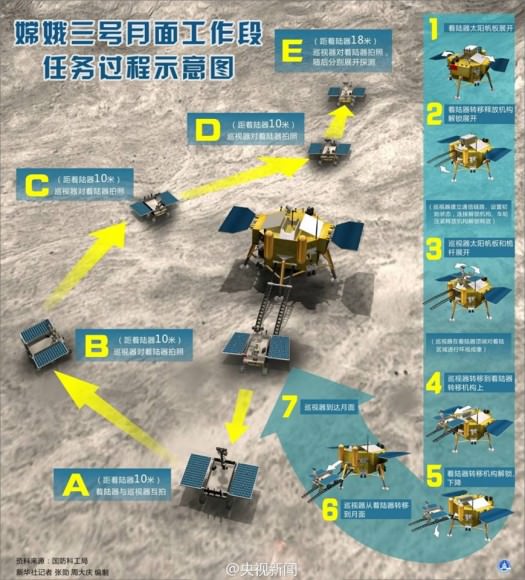
Having fulfilled the last of their joint tasks, the two spacecraft can therefore each begin their own lunar exploration missions, working independently of one another exactly as planned from the outset of China’s inaugural moon landing feat.
Yutu will depart the Chang’e-3 landing zone forever and begin its own lunar trek that’s expected to last at least 3 months – and perhaps longer if it’s delicate electronic components survive the moon’s utterly harsh and unforgiving space environment.
“They will begin to conduct scientific explorations of the geography and geomorphology of the landing spot and nearby areas, and materials like minerals and elements there. We will also explore areas 30 meters and 100 meters beneath the lunar soil. The exploration will continue longer than we planned, because all the instruments and equipments are working very well,” noted Wu Weiren.
The robotic pair of spacecraft safely soft landed on the Moon on Dec. 14 at Mare Imbrium, nearby the Bay of Rainbows, or Sinus Iridum region.
Barely seven hours after the history making touchdown, ‘Yutu’ was painstakingly lowered from its perch atop the lander and then successfully drove all six wheels onto the moon’s surface on Dec. 15.
The Chang’e-3 mothership captured a panoramic view of the stark lunar terrain surrounding the spacecraft after ‘Yutu’ drove some 9 meters away from the lander.
See the eerie panoramic view of the landing site showing Yutu’s first moments on the alien lunar surface in my prior story – here.
See the dramatic video with an astronauts eye view of the lunar descent and touchdown in my prior story – here.

The 120 kg Yutu rover is almost the size of a golf cart. It measures about 1.5 m x 1 m on its sides and stands about 1.5 m (nearly 5 feet) tall – virtually human height.
Yutu, which translates as ‘Jade Rabbit’ will use its suite of four science instruments to survey the moon’s geological structure and composition to locate the moon’s natural resources for use by potential future Chinese astronauts, perhaps a decade from now.
Stay tuned here for Ken’s continuing Chang’e-3, LADEE, MAVEN, MOM, Mars rover and more news.
Ken Kremer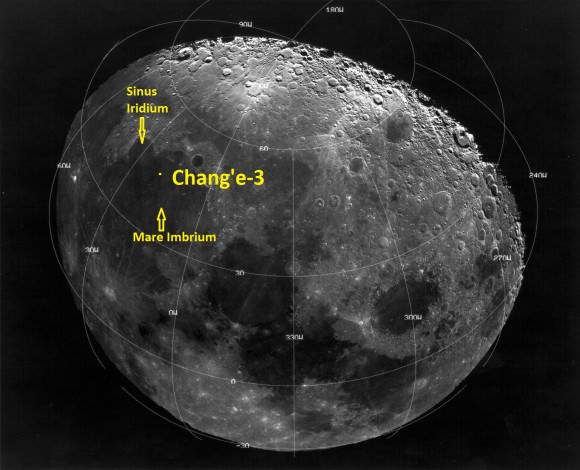 Landing site of Chinese lunar probe Chang’e-3 on Dec. 14, 2013. [/caption]
Landing site of Chinese lunar probe Chang’e-3 on Dec. 14, 2013. [/caption]
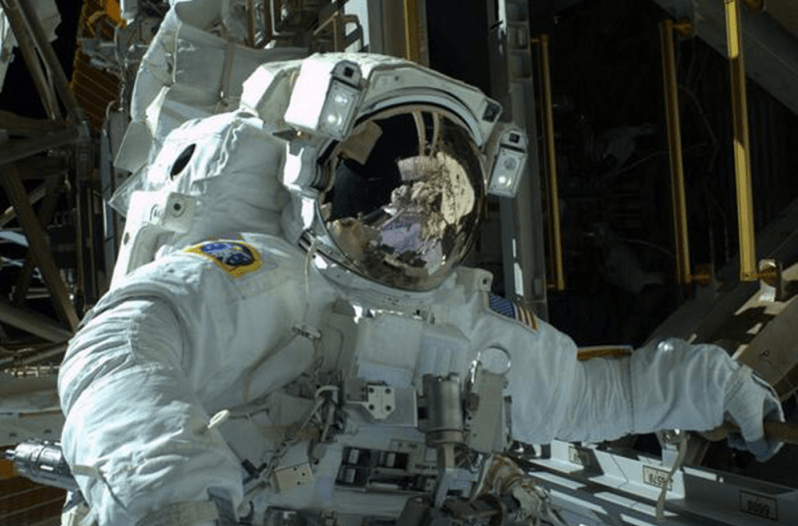
Two astronauts are oh-so-close to fixing the International Space Station cooling system that shut down Dec. 11. NASA astronauts Mike Hopkins and Rick Mastracchio will head “outside” on a spacewalk around 7:10 a.m. EST (12:10 p.m. UTC) to replace a faulty pump that led to the problem.
The spacewalkers were so quick on their first outing (on Saturday, Dec. 21) that they accomplished many of the tasks planned for their second spacewalk. They unhooked the first pump module and stowed it safely, then elected to wait until their second to retrieve the replacement pump, swap it in and turn it on.
Below the jump, here are some things to watch for — including why Hopkins is getting a ride on the Canadarm2 robotic arm this time instead of Mastracchio.
The suits. NASA has new safety procedures and measures in place to protect against helmet water leaks, and everything worked perfectly the first time. In an unrelated incident, while the astronauts were in the airlock, an inadvertent switch-throw introduced some water into Mastracchio’s sublimator. The suit is airing out and Mastracchio is wearing a backup suit. While sublimators need water to function, this water could have ended up in the wrong spot. If he had used the one with the water in it, it could have frozen during the second spacewalk and caused problems, Judd Frieling, the Expedition 38 lead flight director, explained on NASA TV Monday.
The background personnel. While it’s easy to shine the spotlight on the two guys outside, also remember that Japanese astronaut Koichi Wakata will be piloting the robotic arm under direction from CapCom and fellow Japanese astronaut Aki Hoshide. Giving advice to the spacewalkers will be CapCom and NASA astronaut Doug Wheelock, who did a similar repair on the International Space Station in 2010. As Wheelock told Universe Today, there are literally hundreds (likely, thousands) of people working the procedures to get this done.
The timeline. NASA really, really wants to wrap this repair up soon, and it’s not because of the holidays. Dec. 27 marks a planned spacewalk for the Russian side of the station that is totally unrelated to what is going on right now. The Americans are hoping they won’t disrupt the schedule so that the Russians can proceed with their experiment swapouts and foot restraint installation as originally planned.
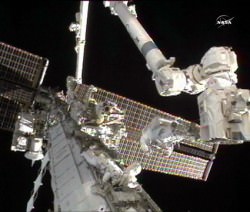
The robotic arm. Hopkins is a much more junior spacewalker than the experienced Mastracchio, who has seven spacewalks underneath his belt before today. Hopkins, who is on his first spaceflight, is in a situation where he can expect more flights in the future. So any training he can get in orbit would be fantastic as he would be a stronger asset on future missions. So, Mastracchio was supposed to ride the Canadarm2 on the second spacewalk, but at that time NASA anticipated it would take three to do the repair. Since the crew finished the work so swiftly, it’s likely only two will be needed. As such, giving Hopkins the slot would be the best practice, NASA and the crew determined.
The future pump move. NASA decided not to move the faulty pump from its temporary stowage location until later. Due to thermal conditions on station, it can stay in its temporary spot until June. This saves the spacewalkers extra work now, but someone will need to head outside by summer to move it to a more permanent location.
We’ll let you know how the spacewalk went.
Why pick up a low quality, wobbly telescope from the department store when you can craft your own – just like Galileo, and all the great astronomers from history. For a minor investment, you can build a worthy telescope out of spare parts and high quality kits.
Continue reading “Astronomy Cast Ep. 327: Telescope Making, Part 1: Toys and Kits”
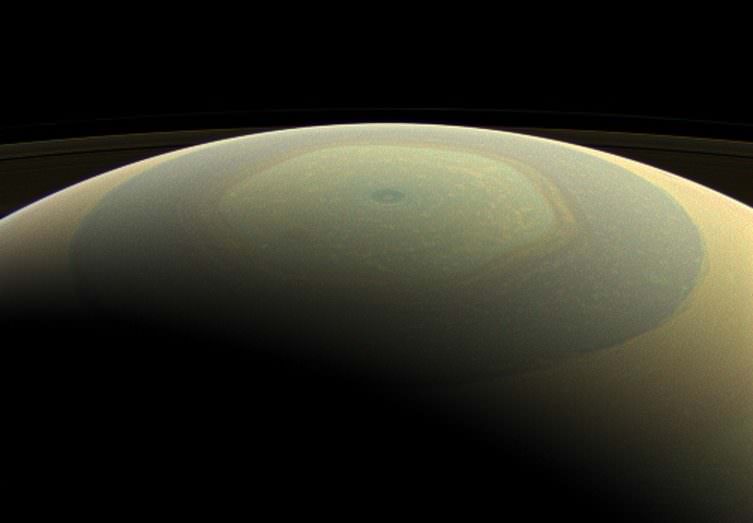
Cassini couldn’t make it to the mall this year to do any Christmas shopping but that’s ok: we’re all getting something even better in our stockings than anything store-bought! To celebrate the holiday season the Cassini team has shared some truly incredible images of Saturn and some of its many moons for the world to “ooh” and “ahh” over. So stoke the fire, pour yourself a glass of egg nog, sit back and marvel at some sights from a wintry wonderland 900 million miles away…
Thanks, Cassini… these are just what I’ve always wanted! (How’d you know?)
Saturn’s southern hemisphere is growing more and more blue as winter approaches there — a coloration similar to what was once seen in the north when Cassini first arrived in 2004:
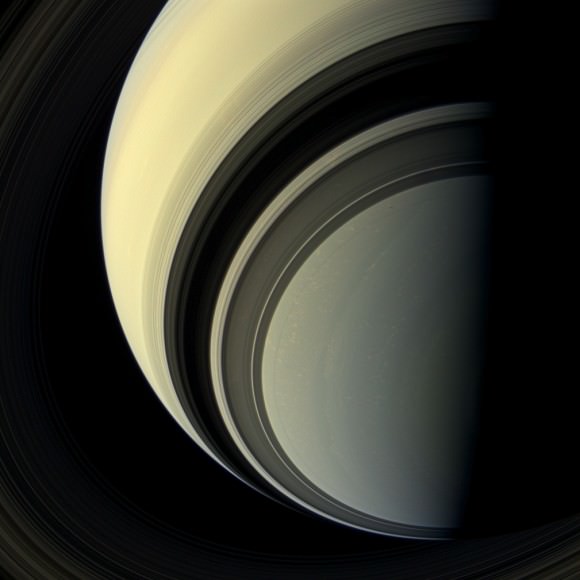
(The small dark spot near the center right of the image above is the shadow of the shepherd moon Prometheus.)
Titan and Rhea, Saturn’s two largest moons, pose for Cassini:
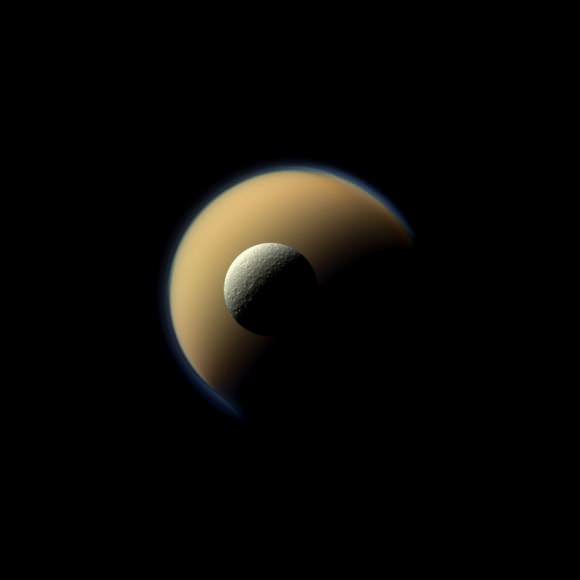
The two moons may look like they’re almost touching but in reality they were nearly half a million miles apart!
Titan’s northern “land of lakes” is visible in this image, captured by Cassini with a special spectral filter able to pierce through the moon’s thick haze:
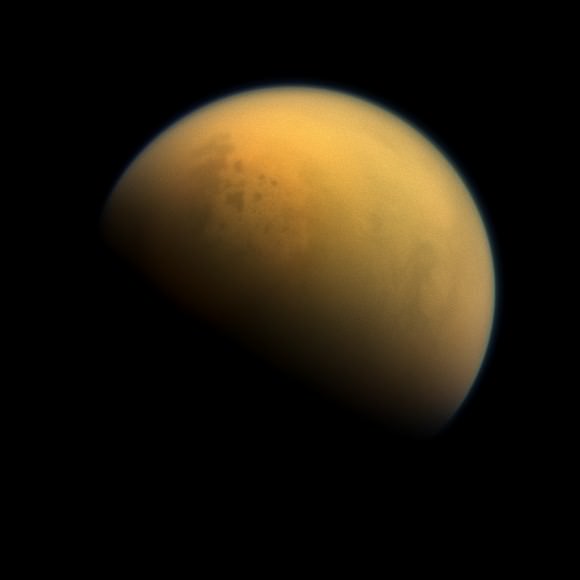
Read more: Titan’s North Pole is Loaded with Lakes
The frozen, snowball-like surface of the 313-mile-wide moon Enceladus:
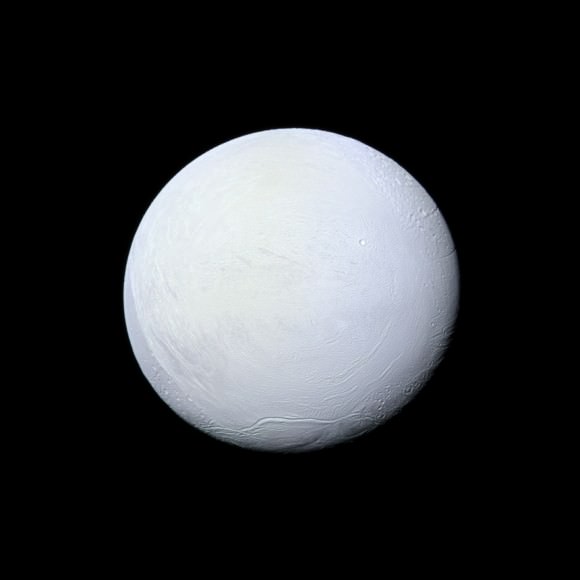
(Even though Enceladus is most famous for its icy geysers, first observed by Cassini in 2005, in these images they are not visible due to the lighting situations.)
Seen in a different illumination angle and in filters sensitive to UV, visible, and infrared light the many fractures and folds of Enceladus’ frozen surface become apparent:
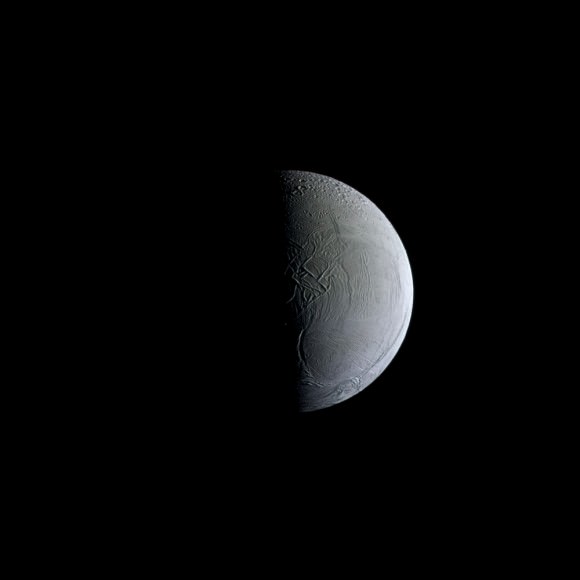
Because of Cassini’s long-duration, multi-season stay in orbit around Saturn, researchers have been able to learn more about the ringed planet and its fascinating family of moons than ever before possible. Cassini is now going into its tenth year at Saturn and with much more research planned, we can only imagine what discoveries (and images!) are yet to come in the new year(s) ahead.
“Until Cassini arrived at Saturn, we didn’t know about the hydrocarbon lakes of Titan, the active drama of Enceladus’ jets, and the intricate patterns at Saturn’s poles,” said Linda Spilker, the Cassini project scientist at NASA’s Jet Propulsion Laboratory. “Spectacular images like these highlight that Cassini has given us the gift of knowledge, which we have been so excited to share with everyone.”
Read more about the images above and see even more on the CICLOPS Imaging Team website, and see the NASA press release here.
Thanks to Carolyn Porco, Cassini Imaging Team Leader, for the heads-up on these gifs — er, gifts!
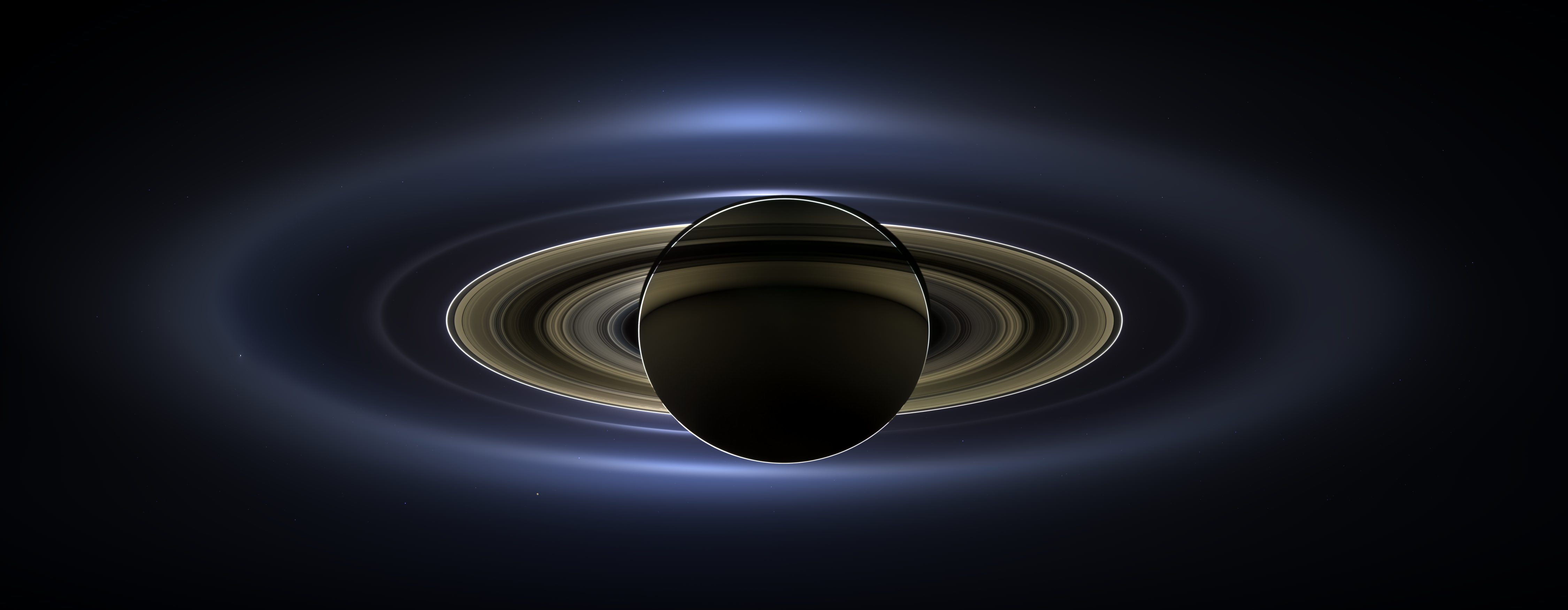
Just to demonstrate how far-reaching that Saturn snapshot of Earth this year was, the Skopje Astronomical Society (from Macedonia) made a video celebrating “The Day The Earth Smiled”, when the Cassini spacecraft looked at Earth on July 19 and thousands of people made pictures and video showing what they were doing at that time.
Watch the video, then look at some stunning pictures of Saturn below the jump.
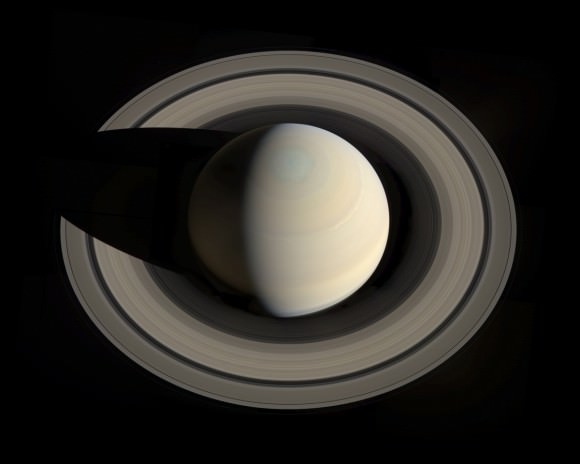
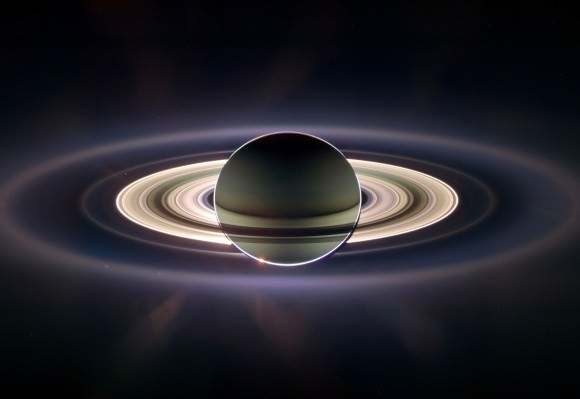
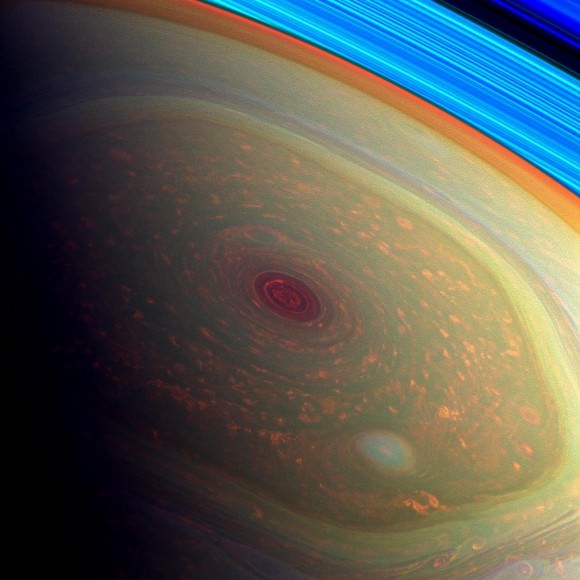
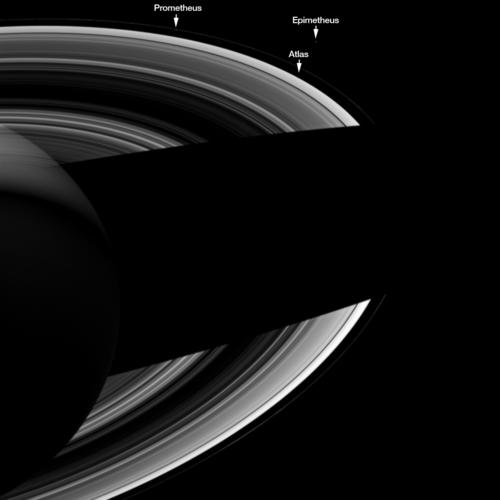
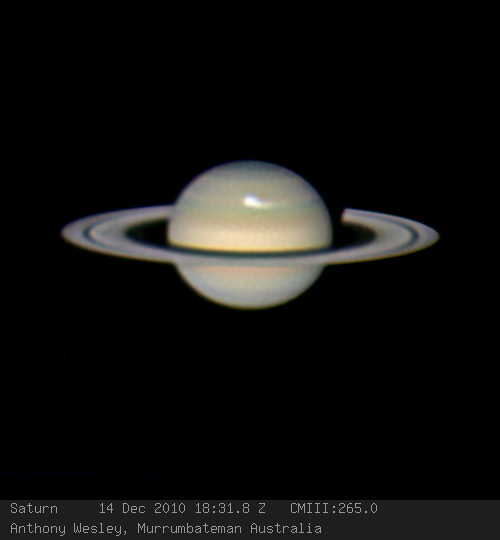
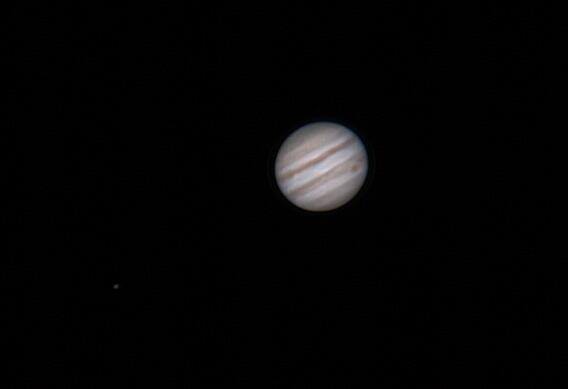
Lovers of planetary action rejoice; the king of the planets is returning to the evening skies.
One of the very first notable astronomical events for 2014 occurs on January 5th, when the planet Jupiter reaches opposition. You can already catch site of Jove in late December, rising in the east about an hour after local sunset. And while Venus will be dropping faster than the ball in Times Square on New Year’s Eve to the west in early 2014, Jupiter will begin to dominate the evening planetary action.
Orbiting the Sun once every 11.9 years, oppositions of Jupiter occur about once every 13 months or about 400 days, as the speedy Earth overtakes the gas giant on the inside track. This means that successive oppositions of the planet move roughly one astronomical constellation eastward. In fact, this year’s opposition is it’s northernmost in 12 years, occurring in the constellation Gemini. “Opposition” means that an outer planet is rising “opposite” to the setting Sun. As this opposition of Jupiter occurs just weeks after the southward solstice, Jupiter now lies in the direction that the Sun will occupy six months from now during the June Solstice.
This all means that Jupiter will ride high in the sky for northern hemisphere observers towards local midnight, a boon for astrophotographers looking to catch the planet high in the sky and out of the low horizon murk.
Jupiter will reach its most northern point for 2014 at a declination of +23.3 degrees on March 11th.
Jupiter also “skipped” 2013, in the sense that it was an “oppositionless year” for the giant world, as said 13 month span fell juuusst right, first on December 2nd, 2012 and then on January 5th, 2014. The next opposition of Jupiter will occur on… you guessed it… February 6th, 2015. The last year missing an opposition of Jupiter was 2001.
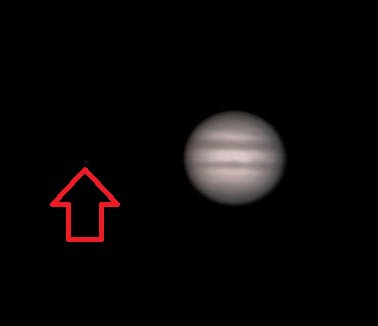
The exact timing of Jupiter’s opposition to the Sun in right ascension occurs at 21:00 UT/4:00 PM EST on January 5th. Its closest approach to Earth, however, arrives 27 hours prior, owing to a slight outward curvature of the approach of the two worlds. Jupiter will then lie about 4.21 astronomical units (AUs) or 629 million kilometres distant. This is just about down the middle of how close it can pass; Jupiter was just under 4 AUs distant in September 2010, and can pass almost 4.5 AUs from Earth, as happened in April 2005.
Jupiter also reaches a maximum brightness of magnitude -2.7 at opposition in 2014 and presents a disk 46.8” arc seconds wide. The coming month also provides a great chance to catch Jupiter in the daytime sky just before sunset, when the waxing gibbous Moon passes 4.9 degrees south of the planet on the evening of January 14th.
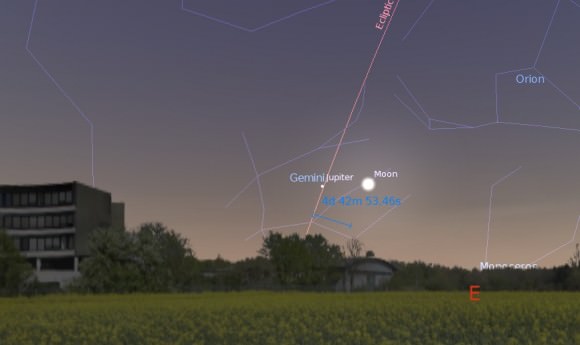
The very first thing you’ll notice looking at Jupiter, even at low power with binoculars or a telescope, is it retinue of moons. Though the planet has 67 discovered moons and counting, only the four large Galilean moons of Io, Europa, Ganymede and Callisto are readily apparent in a telescope. It’s fun to see orbital mechanics in action and watch them from night to night as they change position, just as Galileo first did over four centuries ago. This provided him with evidence that there is much more to universe than meets the eye, though we can consider ourselves fortunate that his proposal to name them the “Medician Moons” after his Medici benefactors was never widely adopted.
Crank up the magnification, and you’ll notice the large twin stripes of the northern and southern equatorial cloud belts crossing the disk of Jupiter. While the northern belt is stable, the southern belt has been known to submerge and disappear from view about every decade or so, as last happened in 2009-2010. You’ll also notice the Great Red Spot, a massive storm system over three times larger than the Earth that has been tracked by astronomers since it was recorded by Samuel Schwabe in 1831. The planet has the fastest rotation of any world in our solar system at 9.9 hours, and you’ll notice this swift rotation tracking Jupiter over the course of a single evening.
Transits and occultations of Jupiter’s moons are also always interesting to watch. The variation in the timing of these events at differing distances led Danish astronomer Ole Rømer to make the first attempts at measuring the speed of light in 1676.
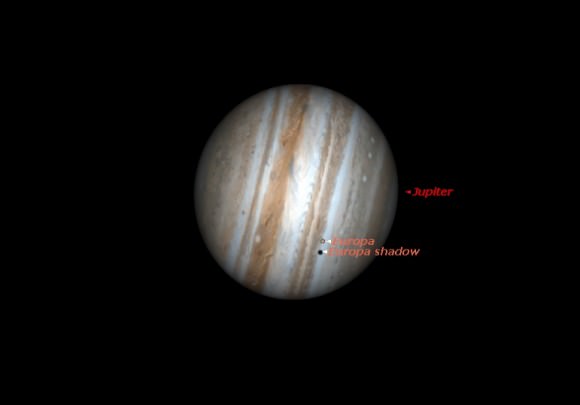
It’s interesting to note that Jupiter and its moons cast a shadow nearly straight back from our line of sight around opposition. You can see this change as the planet heads towards quadrature on April 1st, 2014 and Jupiter and its moons cast shadows off to one side. We’re also in the midst of a plane crossing, as the orbits of the Jovian moons appear edge-on to our line of sight in 2014 headed into early 2015. The outermost Jovian moon Callisto began a series of transits in 2013 and will continue to do so through 2014.
This is a great time to begin following all of the Jovian action, as we head into another exciting year of astronomy!
After seeing Phobos imaged from the surface of the Red Planet by Mars Curiosity, now we’re lucky to get a close-up treat: here’s a video showing Mars Express images of the Martian moon over the last 10 years. The images reveal mysterious grooves running through the small moon, which is 13.5-miles (22 kilometers) in diameter, and scientists still aren’t sure what’s going on.
“The moon’s parallel sets of grooves are perhaps the most striking feature, along with the giant 9 km-wide Stickney impact crater that dominates one face,” the European Space Agency wrote.
“The origin of the moon’s grooves is a subject of much debate. One idea assumes that the crater chains are associated with impact events on the moon itself. Another idea suggests they result from Phobos moving through streams of debris thrown up from impacts 6000 km away on the surface of Mars, with each ‘family’ of grooves corresponding to a different impact event.”
For more about amazing discoveries from Mars Express, check out our top 10 list from the summer!

Kids’ drawings are the best, as astronaut Karen Nyberg proudly shows in her latest mini-quilt piece. The astronaut — who just spent six months in orbit during Expedition 36/37 — is also a prolific quilter and drew inspiration from her son, three-year-old Jack, in this quilt posted on Pinterest. The drawing shows how quickly Jack changed during her mission, she wrote.
“When I left for space station in May, my son was drawing only lines, circles, and squiggles. When I returned in November, he was drawing people. He told me this picture is ‘Jack playing in the grass on a sunny day.’ ”
We’re guessing Nyberg is having an easier time quilting now that she isn’t working in microgravity anymore. The video below explains the challenges she had doing quilting in orbit and making sure that sharp pins didn’t just float away and cause problems on station.
Nyberg is married to astronaut Doug Hurley (who piloted the final shuttle mission, among other things) and as the Houston Chronicle’s Eric Berger points out in November, the parents have lots of experience helping each other out with child care during training and missions.